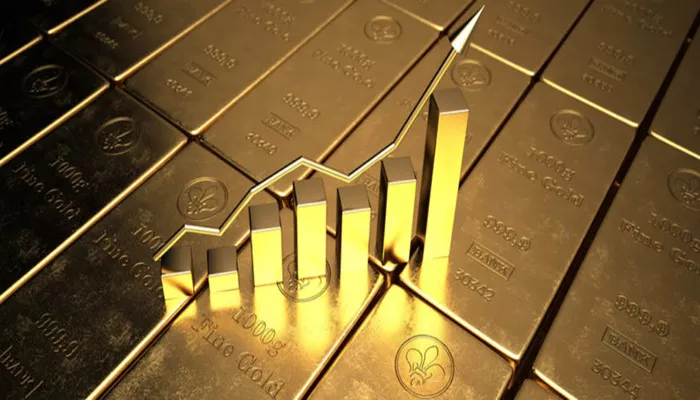After reaching record highs over the weekend, gold prices in India eased slightly on Monday amid profit-booking and market adjustments following geopolitical developments in the Middle East.
The surge in gold began after Israel launched military strikes against Iran on June 13. In the lead-up to the conflict, gold had already been trending upward. On June 12, just one day before the attacks began, the Multi Commodity Exchange (MCX) gold index stood at ₹98,110 per 10 grams. In the days that followed, prices escalated rapidly, reflecting increased investor demand for safe-haven assets.
By June 16 at 6:20 a.m., gold had climbed to an unprecedented ₹1,00,314 per 10 grams — the highest price ever recorded for the yellow metal on Indian markets.
However, the rally showed signs of cooling on Monday. According to a Livemint report, gold futures for the August 2025 contract fell 1.44%, or ₹1,451 per 10 grams, hitting an intraday low of ₹98,825. The pullback is attributed to traders locking in gains after the historic price spike and the market reassessing the geopolitical risk premium.
Despite the minor correction, market analysts say the broader uptrend in gold prices remains intact, supported by ongoing geopolitical tensions, global inflationary pressures, and central bank purchases.
Meanwhile, silver prices also saw a slight dip on Monday. As of 10:27 a.m., MCX silver futures were quoted at ₹1,06,788 per kilogram. The spot bullion rate for silver stood at ₹1,06,930, marking a 0.26% decline compared to the previous day’s level.
The heightened volatility in the bullion market is being closely watched by traders and investors. Gold and silver, traditionally considered safe-haven assets during periods of economic and political instability, have witnessed increased demand globally in recent months. The escalation in the Middle East has only intensified this trend, with many investors shifting allocations toward physical bullion and futures contracts.
Despite the recent dip, many analysts maintain a bullish outlook on gold, suggesting that any correction is likely to be short-lived. Ongoing uncertainties surrounding global monetary policy, inflation trends, and geopolitical risks are expected to provide continued support for precious metals in the medium to long term.
Investors are now turning their attention to upcoming central bank meetings and macroeconomic data releases, which may influence currency values, interest rate expectations, and ultimately, the direction of gold and silver prices in the weeks ahead.
Related topics:
- India Surpasses China in Gold Purchases, Buying 51% More in Three Months
- Qilu Bank Enhances Support for Small Businesses with Innovative Financial Tools
- Bitcoin Poised for a Surge Amid Gold’s Delivery Delays, Expert Claims


